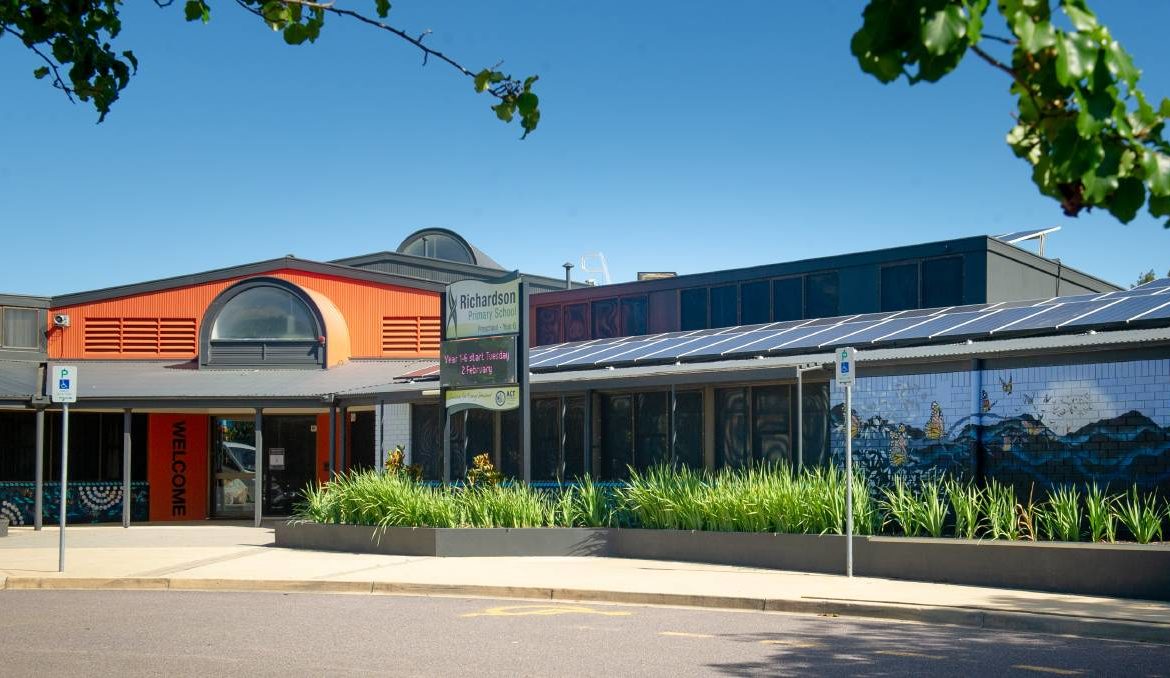news, education,
Parents have called for a long-term plan to remove hazardous materials in schools after lead dust was found in a fourth ACT public school. It comes as the ACT government has assembled an expert advisory panel and a taskforce within the Education Directorate to manage $15 million to fast-track remediation at the schools most in need. ACT Council of Parent and Citizens Associations’ spokeswoman Alison Elliott said in the case of Richardson Primary School the situation had been handled well but a plan was needed to remediate older schools. “Lead and asbestos are still present in our schools. While they will require ongoing management, parents also want to see, at the same time, action on a long-term plan to upgrade these older schools and to actually remove these materials,” Ms Elliott said. “We need long-term funding and a clear plan to make our schools fit for the next generation. We can’t keep handing down these hazards.” Lead dust was discovered in the boiler room and heating duct at Richardson Primary School during routine maintenance. The highest lead reading for these areas was was 8.89 milligrams per square metre (mg/sq m). READ MORE: An Education Directorate spokesman said 47 test samples were taken by the licensed assessor in the library, hall and five learning areas and 44 of these returned results with no lead. “Two samples taken in staff only areas of the library returned readings of 0.09 mg/sq m, below the acceptance threshold of 0.11mg/sq m. These areas were cleaned over the weekend. “Only one returned an elevated result above the acceptance criteria. This test, taken from a ceiling rafter out of the reach of students and staff, returned a reading of 1.73mg/m2 (the acceptance criteria in this location is 1.08mg/m2).” Rooms have been cleared as safe to occupy but the rafter will be cleaned by specialists outside school hours. Members of the expert advisory panel include representatives of the Education Directorate, the ACT Chief Health Officer, a representative of ACT Worksafe, Professor Mark Taylor from Macquarie University and Professor Martyn Kirk from the Australian National University. Education Minister Yvette Berry said in the past two months the directorate had reviewed the hazardous materials registers and assessed the condition the paint in the 70 schools known to contain the substances. She said encapsulation by painting over the surface was the most common method for remediating lead paint. Opposition spokesman Jeremy Hanson said he was concerned that $15 million wouldn’t be enough funding to remediate all schools. “I don’t have confidence that the government is taking steps to remediate this with sufficient urgency,” he said. Lead dust was also discovered in Yarralumla Primary School, North Ainslie Primary School and Alfred Deakin High School. For faster access to the latest Canberra news, download The Canberra Times app for iOS and Android.
/images/transform/v1/crop/frm/33pRA5ArzT57tWtt8VHHenS/ea744ac0-e51d-4626-a1ec-6c5593b44fa2.jpg/r0_91_3386_2004_w1200_h678_fmax.jpg
Parents have called for a long-term plan to remove hazardous materials in schools after lead dust was found in a fourth ACT public school.
It comes as the ACT government has assembled an expert advisory panel and a taskforce within the Education Directorate to manage $15 million to fast-track remediation at the schools most in need.
ACT Council of Parent and Citizens Associations’ spokeswoman Alison Elliott said in the case of Richardson Primary School the situation had been handled well but a plan was needed to remediate older schools.
“Lead and asbestos are still present in our schools. While they will require ongoing management, parents also want to see, at the same time, action on a long-term plan to upgrade these older schools and to actually remove these materials,” Ms Elliott said.
“We need long-term funding and a clear plan to make our schools fit for the next generation. We can’t keep handing down these hazards.”
Lead dust was discovered in the boiler room and heating duct at Richardson Primary School during routine maintenance. The highest lead reading for these areas was was 8.89 milligrams per square metre (mg/sq m).
An Education Directorate spokesman said 47 test samples were taken by the licensed assessor in the library, hall and five learning areas and 44 of these returned results with no lead.
“Two samples taken in staff only areas of the library returned readings of 0.09 mg/sq m, below the acceptance threshold of 0.11mg/sq m. These areas were cleaned over the weekend.
“Only one returned an elevated result above the acceptance criteria. This test, taken from a ceiling rafter out of the reach of students and staff, returned a reading of 1.73mg/m2 (the acceptance criteria in this location is 1.08mg/m2).”
Rooms have been cleared as safe to occupy but the rafter will be cleaned by specialists outside school hours.
Opposition education spokesman Jeremy Hanson said he was not confident the government was remediating hazardous materials in schools with enough urgency. Picture: Sitthixay Ditthavong
Members of the expert advisory panel include representatives of the Education Directorate, the ACT Chief Health Officer, a representative of ACT Worksafe, Professor Mark Taylor from Macquarie University and Professor Martyn Kirk from the Australian National University.
Education Minister Yvette Berry said in the past two months the directorate had reviewed the hazardous materials registers and assessed the condition the paint in the 70 schools known to contain the substances.
She said encapsulation by painting over the surface was the most common method for remediating lead paint.
Opposition spokesman Jeremy Hanson said he was concerned that $15 million wouldn’t be enough funding to remediate all schools.
“I don’t have confidence that the government is taking steps to remediate this with sufficient urgency,” he said.







